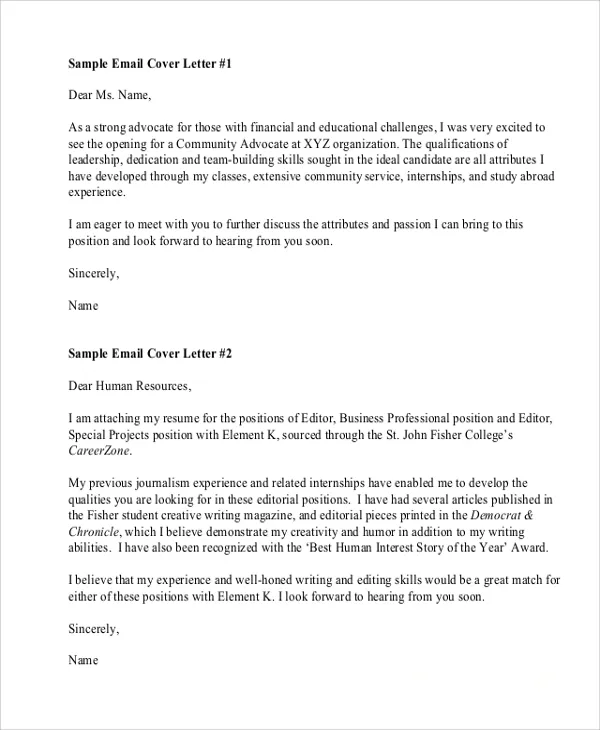Crafting the Perfect Subject Line
The subject line is the first impression you make on a potential employer. It’s the gateway to your cover letter and resume, and a poorly crafted one can lead to your application being overlooked. A well-written subject line is concise, clear, and directly related to the job you’re applying for. It should immediately communicate the purpose of your email and make it easy for the recipient to understand what the email is about. To effectively catch the hiring manager’s attention, your subject line should be tailored to the specific job posting you’re responding to, incorporating the job title or reference number when provided. Avoid vague or generic subject lines, as they can make your email seem unimportant or irrelevant.
Why the Subject Line Matters
In the fast-paced world of recruitment, hiring managers and recruiters often sift through hundreds of emails daily. The subject line serves as their first filter, helping them quickly prioritize and categorize emails. A compelling subject line increases the likelihood of your email being opened and reviewed. A clear and specific subject line helps the hiring manager quickly identify the purpose of your email, making it easier for them to determine its relevance. If your subject line is unclear or irrelevant, your email may be ignored or, worse, deleted without being read. A well-crafted subject line also helps in organizing and tracking applications. It allows recruiters to easily search and find specific applications when needed. It’s an essential element that can significantly impact the success of your job application.
Best Practices for Subject Lines

Keep your subject line concise, aiming for under 60 characters. This ensures it displays fully on various devices. Include the job title or the specific position you’re applying for; this immediately informs the recipient about the purpose of your email. If the job posting includes a reference number, be sure to include it in your subject line for quick identification. Avoid using generic phrases like ‘Job Application’ or ‘Resume’; these lack specificity and can get lost in the shuffle. Use clear and professional language, avoiding slang or abbreviations. Always proofread your subject line for any typos or grammatical errors before sending it. Remember, your subject line is the first glimpse of your professionalism, so ensure it reflects your attention to detail and commitment to the role.
Formatting Your Email Body
The body of your email should be well-formatted, easy to read, and professional. Use a clear and readable font like Arial, Calibri, or Times New Roman, and ensure the font size is appropriate (usually between 10 and 12 points). Break up long paragraphs into shorter ones to make the text more digestible. Use bullet points or numbered lists to highlight key information or qualifications. Employ whitespace effectively; leave a blank line between paragraphs to improve readability. Avoid using excessive bolding, underlining, or italics; they can distract from the content. Maintain consistent alignment throughout your email, typically left-aligned for a clean look. The goal is to create an email that is visually appealing and easy for the recipient to scan and understand, making a positive impression from the start.
The Importance of a Professional Tone
Maintain a professional tone throughout your email. Use formal language and avoid slang, colloquialisms, and contractions (such as ‘can’t’ or ‘won’t’). Address the hiring manager or the recipient by name whenever possible; if the name isn’t available, use a formal greeting like ‘Dear Hiring Manager’. Proofread your email carefully for any grammatical errors or typos, as they can undermine your credibility. Ensure your email reflects a positive and enthusiastic attitude towards the job and the company. Keep the email concise and to the point; avoid rambling or including unnecessary information. Your goal is to present yourself as a serious, professional candidate who is eager to contribute to the company’s success, and your tone plays a crucial role in achieving this.
Key Elements of the Email Body
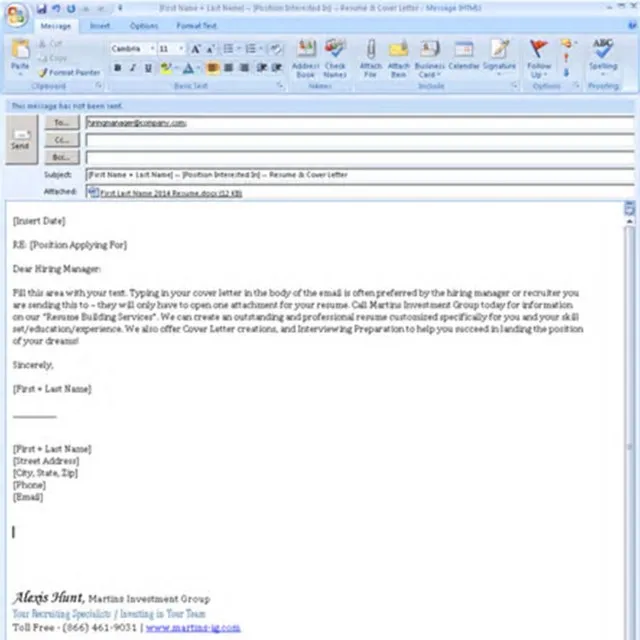
Start with a professional salutation, addressing the recipient by name if known. State the purpose of your email clearly in the first sentence; mention the job title you’re applying for and where you found the listing. Briefly introduce yourself and highlight your most relevant skills and experiences. Express your interest in the position and the company; show that you’ve researched the company and understand their mission. Mention that your resume and cover letter are attached for their review. Thank the recipient for their time and consideration, and include a professional closing like ‘Sincerely’ or ‘Best regards’. Provide your contact information (phone number and email address) in your signature, making it easy for the recruiter to reach you.
Attaching Your Cover Letter and Resume
Always attach your cover letter and resume as separate files. This allows the recruiter to view each document independently. Ensure that both documents are well-formatted and free from errors. Use a clear and professional file naming convention (e.g., ‘FirstName_LastName_CoverLetter.pdf’ and ‘FirstName_LastName_Resume.pdf’) to make it easy for the recruiter to identify and organize your documents. Verify that your attachments are the correct files and that they are opening properly. Double-check the file sizes to make sure they are within acceptable limits (usually no more than 2-3MB). If the job posting specifies any particular file formats, be sure to adhere to those instructions.
File Format Recommendations
When sending your cover letter and resume, the PDF (Portable Document Format) is the preferred format. PDFs preserve the formatting of your documents, ensuring they appear as intended regardless of the recipient’s software or device. PDFs are also less susceptible to compatibility issues compared to other formats. If a specific format is requested in the job posting, follow those instructions precisely. If you’re unsure which format to use, PDF is generally the safest and most professional option. Before saving your documents as PDFs, proofread them carefully to ensure they are error-free and formatted correctly.
Naming Your Files for Success
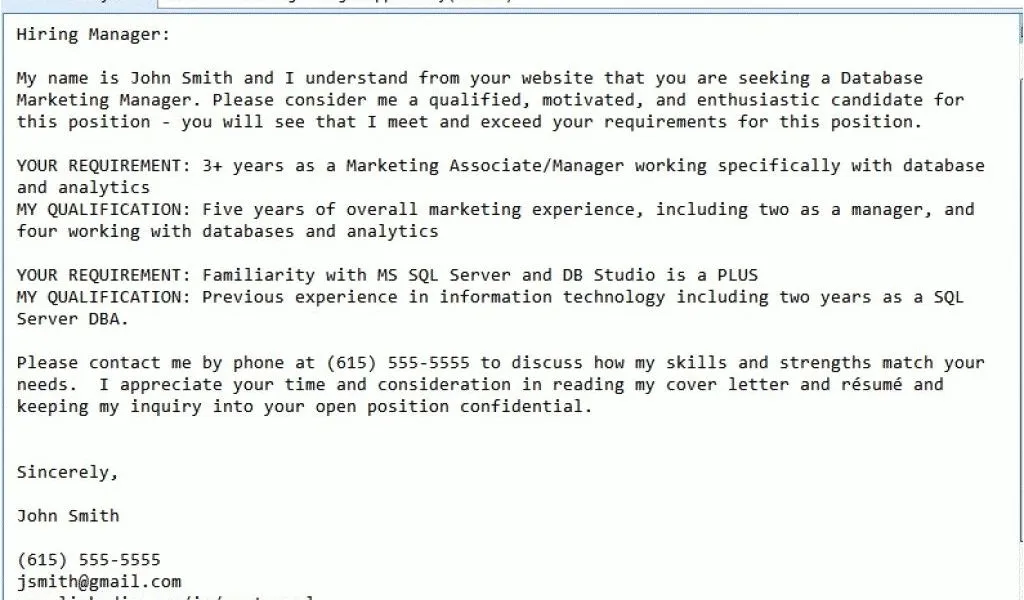
Use a clear and professional file naming convention. Your file names should include your first and last name, and clearly indicate whether the file is a cover letter or a resume. For example, ‘John_Doe_CoverLetter.pdf’ and ‘John_Doe_Resume.pdf’. Avoid using generic file names like ‘Resume.pdf’ or ‘CoverLetter.pdf’, as these can easily get mixed up with other applications. Use underscores or hyphens to separate words in your file names; avoid spaces, as they can sometimes cause issues. Keep your file names short and easy to understand. Always proofread your file names to ensure there are no typos or errors.
Writing a Compelling Email Body
The email body should briefly summarize your key qualifications and express your enthusiasm for the role. Tailor your message to the specific job and the company you’re applying to, showing that you’ve done your research. Highlight the most relevant skills and experiences that align with the job requirements, providing specific examples. Explain why you are a good fit for the role and what you can bring to the company. Keep your email concise and to the point; aim for a brief but impactful message. Ensure your writing is clear, concise, and free of errors. Proofread carefully to make sure your message is polished and professional, leaving a positive impression on the hiring manager.
Highlighting Key Qualifications
In the email body, highlight the key qualifications that make you a strong candidate for the job. Review the job description carefully and identify the most important skills and experiences the employer is looking for. Briefly mention these qualifications, using specific examples to demonstrate your abilities. Quantify your accomplishments whenever possible; use numbers to show the impact of your work. Focus on the achievements that are most relevant to the job requirements. Tailor your message to the specific needs of the employer, showing how you can contribute to their success. Make sure your qualifications align with the key requirements outlined in the job posting.
Expressing Enthusiasm for the Role
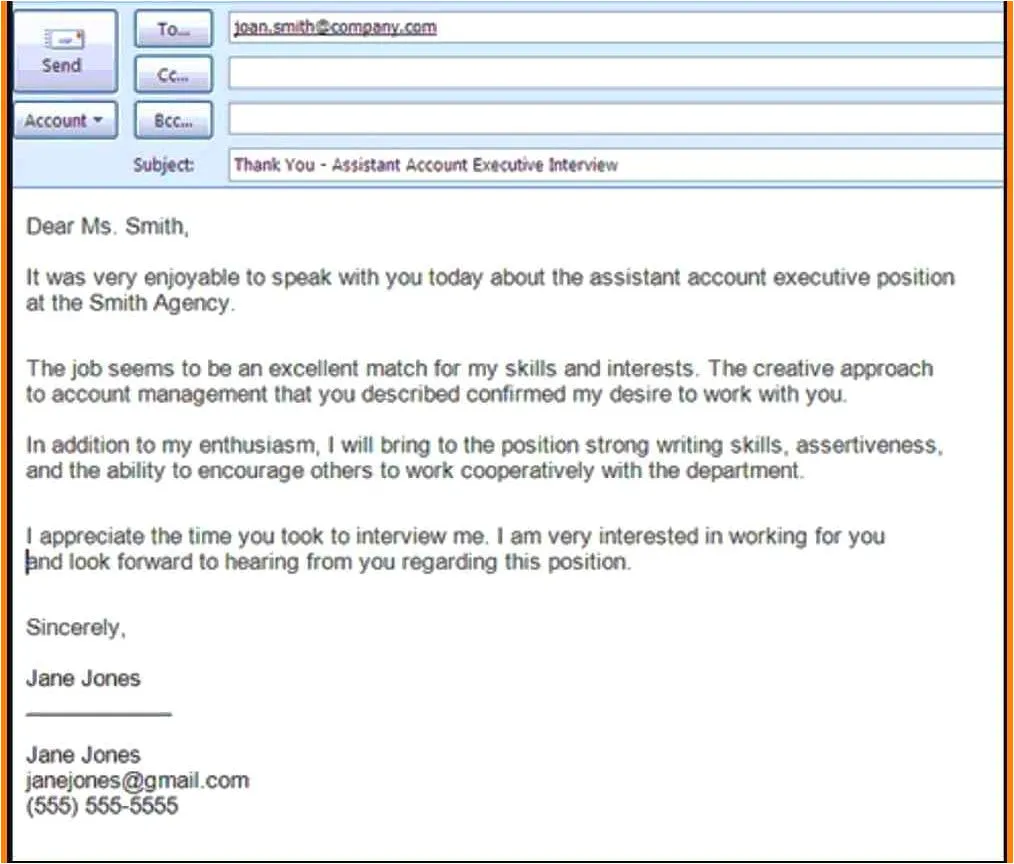
Express your genuine interest in the position and the company. Show that you’ve researched the company and understand their mission, values, and recent activities. Explain why you are excited about the opportunity and what attracts you to the role. Mention any specific aspects of the job or the company that resonate with you. Show that you are enthusiastic about contributing to their goals. Your enthusiasm should be reflected in your tone and language. Avoid generic statements; show that you have a personal connection to the company and the role.
Proofreading and Sending
Before sending your email, proofread it carefully for any errors. Check for typos, grammatical errors, and inconsistencies in your formatting. Make sure all the information is accurate and up-to-date. Verify that your attachments are the correct files and that they open properly. Double-check the recipient’s email address to ensure it is correct. Review your subject line to make sure it’s appropriate. Read your email aloud to catch any awkward phrasing or unclear sentences. Once you’ve thoroughly reviewed your email and attachments, send it with confidence.
Checking for Errors
Thoroughly check your email for any potential errors that could detract from your professionalism. Look for typos, grammatical errors, and punctuation mistakes. Ensure all names, titles, and contact information are correct. Verify that the attachments are the correct files and that they are in the right format. Double-check the subject line to ensure it’s appropriate and accurate. Review your tone to ensure it is professional and enthusiastic. Use a spell checker and grammar checker, but also read your email carefully to catch any errors those tools might miss. A mistake-free email reflects your attention to detail and commitment to excellence.
Sending Your Email at the Right Time
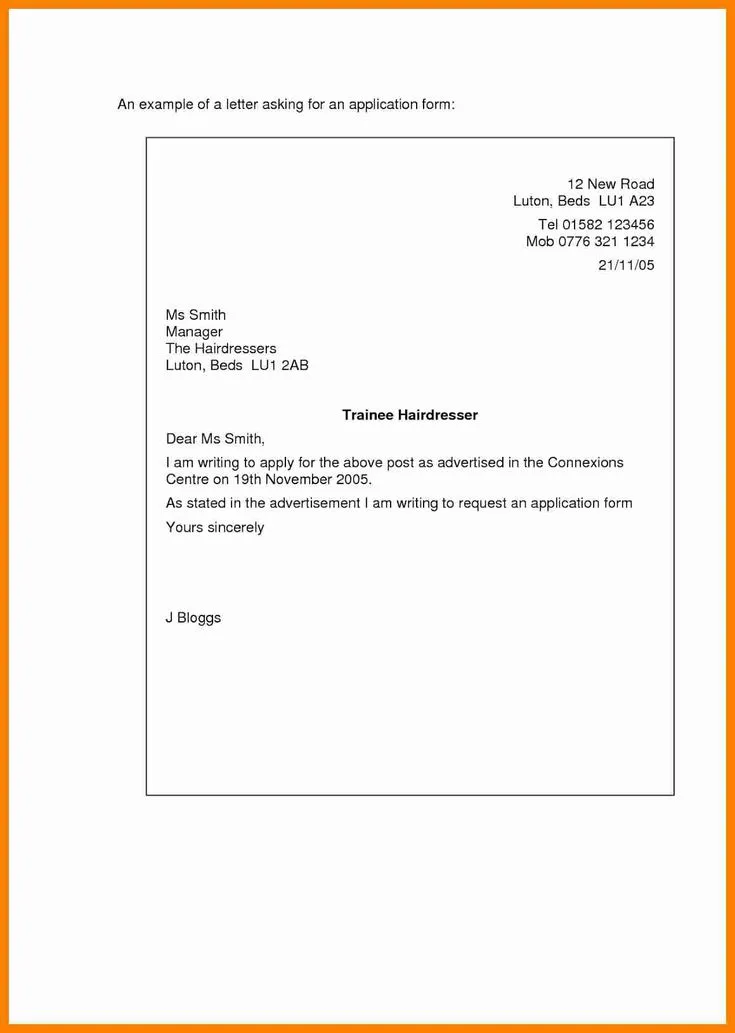
Consider the best time to send your email to increase the chances of it being seen. Research suggests that sending emails during business hours (9 AM to 5 PM, Monday to Friday) is often most effective, as this is when recruiters and hiring managers are most likely to check their inboxes. Avoid sending your email late at night or on weekends, unless the job posting explicitly requests it. Take into account the time zone of the recipient to ensure your email arrives during their working hours. If possible, send your email early in the week to increase the likelihood of it being reviewed before the end of the week. The timing of your email can influence its visibility, so choose the sending time carefully.
Following Up on Your Application
If you don’t hear back within a reasonable timeframe (usually one to two weeks), it is acceptable to follow up. Send a brief, polite email to the hiring manager or the recruiter, reiterating your interest in the position. Refer to your original application and mention the job title. Express your enthusiasm for the opportunity and briefly highlight your key qualifications. Keep your follow-up email concise and professional. Avoid being overly persistent or demanding. If you haven’t received a response after a second follow-up (e.g., after another two weeks), it’s usually best to assume the company has moved forward with other candidates. Use the follow-up as a way to show your continued interest and demonstrate your commitment to the role.
